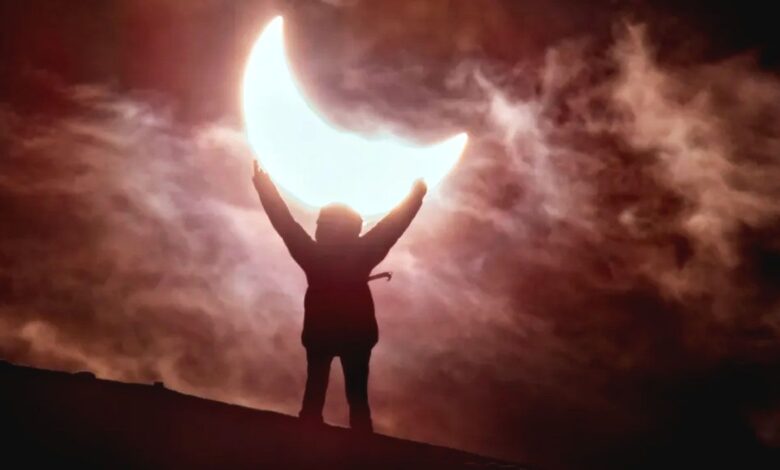
Fotografia Polki uwieczniająca zaćmienie Słońca na Islandii została wyróżniona przez NASA.
Astronomy Picture of the Day, or APOD for short, is a service run by NASA where one astronomical object or astro landscape photo is featured daily. A Polish photographer was awarded the title of APOD on March 30th – The photo shows a solar eclipse from March 29th in Iceland, where it reached a maximum of 70 percent. Due to the fact that the Sun was already quite high, capturing this photo required choosing the right hill and location where the cloud cover was perfect for a single exposure. The choice fell on the dormant volcano – Grabrok, which measures 170 meters in height. At the top, there was a strong, cold wind blowing, so it was a sacrifice mainly for my colleague Ilona Chrzanowska, who can be seen in the photo; and the photo itself was honestly one of the most technically challenging ones I’ve had to take – Wioleta Gorecka described.
She mentioned that her adventure with photography began with her observations of the first Northern Lights, 16 years ago, when she moved to Iceland. The Cosmos itself has been inspiring for her since childhood, so as her skills developed, she began to incorporate stars more boldly into her photos. Her work began to appear in contests, awards, and publications on a regular basis.
She was awarded the NASA Astronomy Picture of the Day for the second time – the first time on August 15, 2023. In one photo, she managed to capture the aurora, gas emissions from the Fagradalsfjall volcano, and emissions from the Svartsengi geothermal power plant. She also mentioned that her work regularly appeared on another NASA portal – spaceweather.com. Additionally, she is the first Polish person whose photo appeared in the prestigious American magazine Sky & Telescope focusing on astronomy.
Currently, she is professionally involved in photography and for the past two years, she has been organizing astro trips to various parts of the world with Michał Kałużny – one of the leading Polish astrophotographers – „of course in the darkest corners.”
She highlighted that these places are usually remote due to significant light pollution in Europe. In Poland, for example, there is only one such dark spot – Bieszczady, but unfortunately, the situation there is deteriorating. She finds it alarming that 75 percent of the world’s population has never seen the Milky Way! Articles are published about the harmful effects of light pollution – from its negative impact to energy efficiency, but no concrete action seems to be taken. Technology is advancing, moving towards ecological solutions, sometimes quite radical, yet we struggle to deal with the simple problem of excessive and inefficient lighting in cities and villages.
Nonetheless, she is pleased with the growing interest in astrophotography among people of all ages, from teenagers to retirees. The field has evolved significantly in terms of technology, making some aspects easier while also allowing those with a strong passion to reach for the stars. This resurgence has ignited the explorer’s spirit worthy of Nicolaus Copernicus, and she is proud of this!
In recent months, the title of the photo of the day was awarded to several photos taken by authors from Poland; including Marcin Rosadziński (three times), Mariusz Durlej, Antoni Zegarski, Marcin Ślipko, Daniel Koszela, Ireneusz Nowak, and Włodzimierz Bubak.
To see Wioleta Gorecka’s featured photo, visit: https://apod.nasa.gov/apod/ap250330.html.
International Team in Space. The First Such Flight Over the Earth’s Poles.
Zdjęcie główne artykułu pochodzi ze strony tvp.info.
















